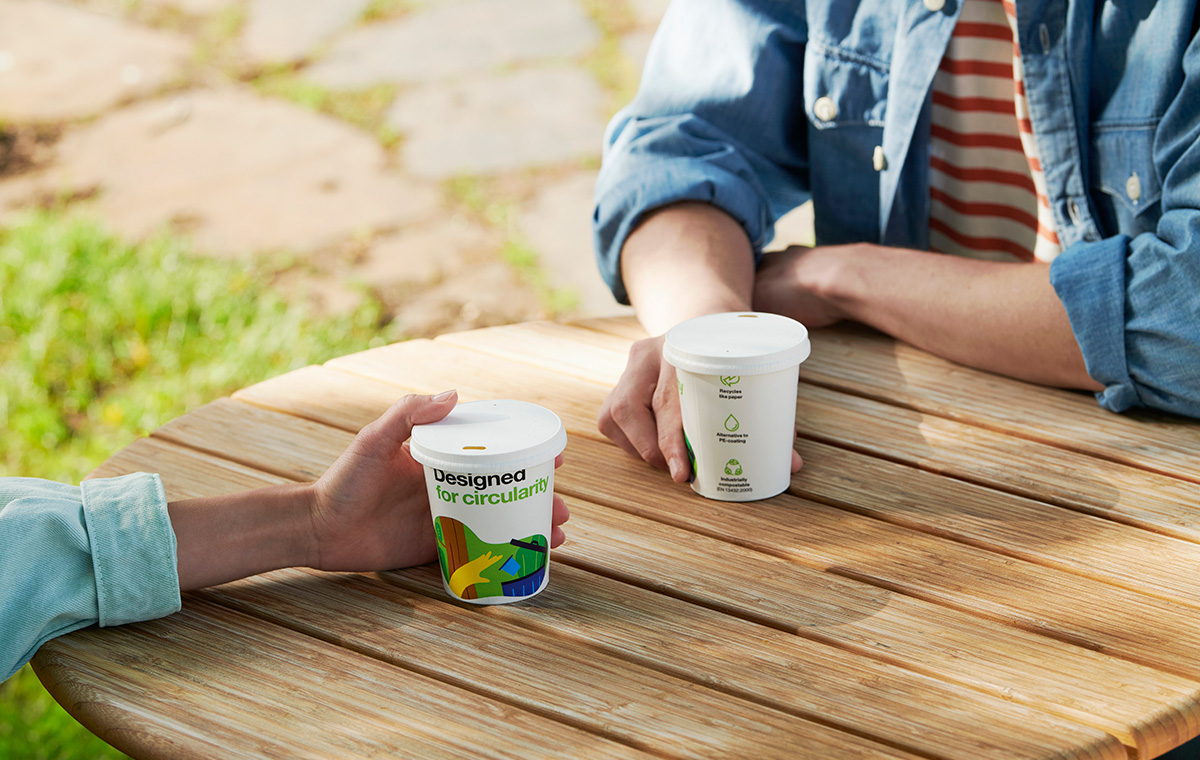Europe has an ambition to become a circular economy. The EU has set targets to increase recycling to accelerate the transformation from linear to circular economy. By 2025, 55% of municipal waste and 65% of packaging waste must be reused or recycled. We know that the recycling rates have increased in the past, but progress has recently slowed down.
More than 80% of paper and cardboard packaging is collected for recycling in Europe, making paper and cardboard the most recycled packaging material in Europe. While paper and cardboard are expected to meet the material-specific packaging waste recycling targets, that is 75% by 2025, many Member States are not on track to meet the overall recycling targets.
Room for improvement
Today, there is untapped potential for different kind of packaging waste, such as take-away trays and used paper cups. For a truly circular world, every cup counts. When recycled right, the fibers can have multiple lives. However, convenient, separate collection is not always available for most of the population, whether dealing with waste at home or on the go. Also, we all as consumers are not necessarily considering our role important when putting used packaging to the bin. Current collection systems could capture more valuable materials for recycling while treatment capacity for collected materials is limited to serve all sorting and recycling needs.
Recycling revolution
In the coming years, collection and recycling are being revolutionised in the EU. Now, the Packaging and Packaging Waste Directive is under revision to become regulation. Based on the Commission’s proposal, the Packaging and Packaging Waste Regulation highlights the need for all packaging to be recyclable and recycled at scale, meaning that used packaging is collected, sorted and recycled through installed state-of-the-art infrastructure and processes, covering at least 75 % of the EU population.
While the EU is in the progress of making the recycling revolution happen, I am happy to see that industry is already acting. 4evergreen is a cross-industry alliance of over 100 members representing the fiber-based packaging value chain, targeting at reaching a 90% recycling rate for fiber-based packaging by 2030. 4evergreen focuses on the types that have a low recycling performance today, household and on the go food packaging also including paper cups. At the same time companies are teaming up to launch initiatives, such as The Cup Collective, among like-minded partners and customers for developing solutions together for collection and sorting of used paper cups for recycling.
Where there is a will, there is a way
Stora Enso aims for full circularity. Our materials are made from renewable wood fiber and designed and tested for recyclability. To hold the liquid today, a paper cup needs a barrier coating that is either a thin plastic lining or a dispersion. Barrier coating means that material has a protection layer for the most demanding end-uses, such as safe and hygienic food and beverage packaging. Stora Enso has recycling mills across Europe receiving all kinds of fiber materials, such as used paper cups with these barrier coatings. In recycling, Stora Enso separates non-fiber components, such as coating, from fibers in the recycling process to enable full recovery.
Right to recycle right
Stora Enso has strong expertise in paper and paperboard making from both fresh and recycled fibers. Ensuring good recyclability of paper cups in existing recycling processes has been a guiding principle for product development. When cups are sorted the right way, we can recycle them and turn them into something new.
I’m dreaming of a more sustainable future where we can enjoy a cup of coffee in a coffee shop or on the go knowing where to dispose the paper cup after use because of separate collection. Disposing empty paper cups and other packaging material for recycling is something we all can contribute to, and we are working across the value chain to improve the quality of material for recycling to guarantee full recovery. Every cup counts. Join us and put your paper cup in the right bin today.







